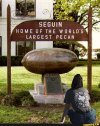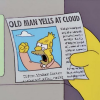I know the topic has been beaten to death in some circles and heated discussions by the thousands over what was the actual knife carried by Jim Bowie at the Alamo. But I have a nagging question that I just cannot shake. The knife known as the Juan Seguin Bowie was for a while the front runner for a knife that may have been one of the knives owned by Jim Bowie at the end of his life. I believe there were several, I think his taste in knives and changes in it's design grew as his legend did. This knife was tested at one point for the silver content where it was marked by Searless and found not to be of the right content for the era. No one ever tested the blade or the handle or anything else and the knife disappeared into history as a fake. However, when you look at the design of the knife next to Searless bowies made about the time that everyone wanted "a knife like Bowies" and the fact that the handle is a dead ringer for the one in his famous painting (a better match than the "family sword" that it is attributed to) And throw in the fact that it is believed that Seguin used Bowies horse and saddle when he was sent for help..... Would it be too far a leap to suppose that he may have had one of Bowies valued blades with him....
What I'm saying is this.... is it possible that someone may have had an authentic knife... but in order to increase interest in the blade attempted to tie the Bowie to a known maker like Searless and in so doing ruined the knife. The Searless mark could be a forgery and the knife could be genuine. If that sounds to crazy take another look at the blade design and compare it to the known design characteristics associated to Bowie


